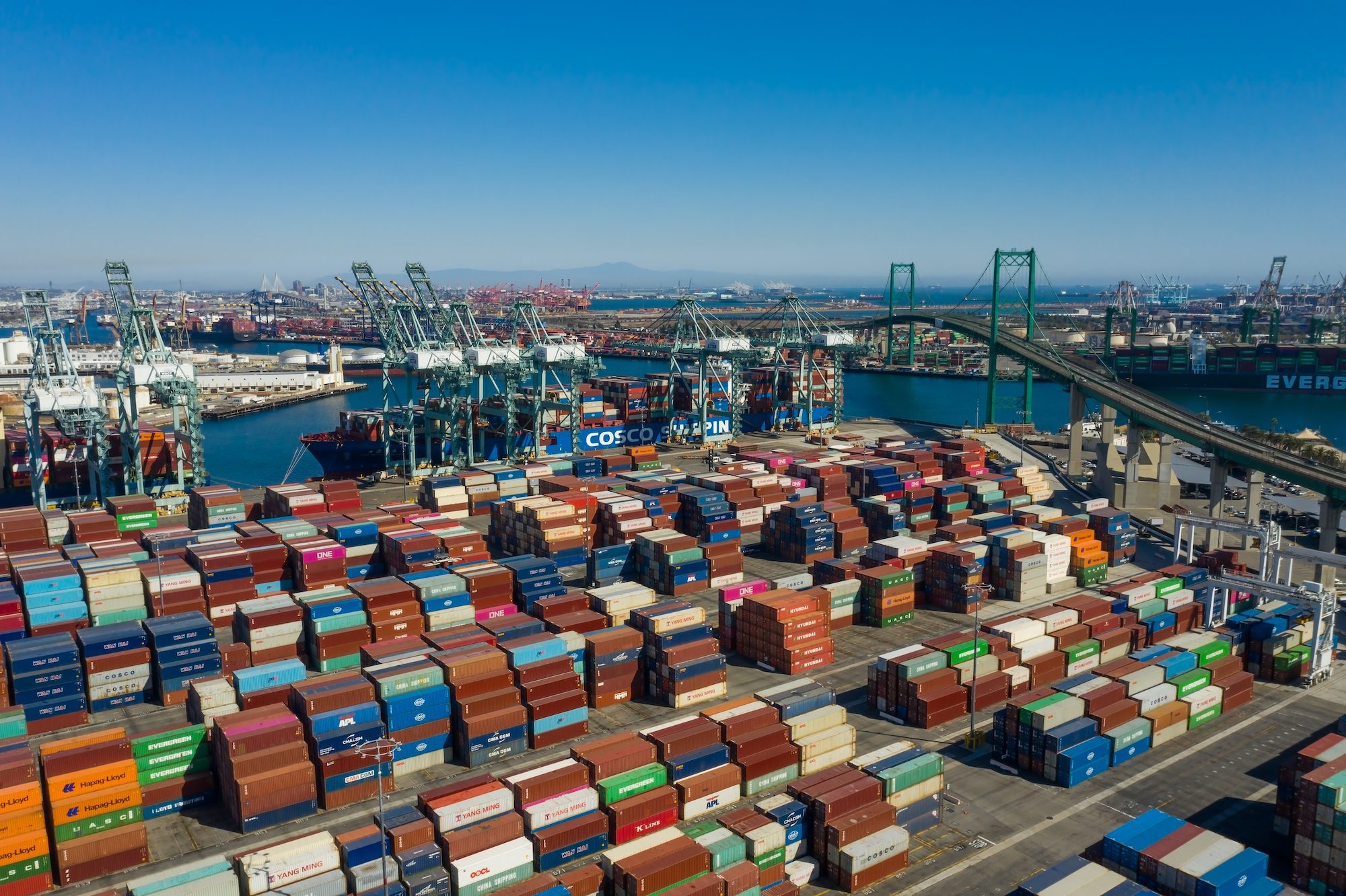U.S. Customs Revenue Tops $100 Billion for First Time Amid Tariff Surge
US revenue from customs duties this fiscal year surpassed $100 billion for the first time, reflecting higher tariffs imposed by the Trump administration.

Imports at the nation’s major retail container ports set a new record this spring and are expected to see near-record volume this month as retailers bring in merchandise ahead of rising costs and further supply chain issues, according to a new report from the National Retail Federation (NRF).
U.S. ports covered by the NRF’s Global Port Tracker, which is produced by Hackett Associates, handled 2.34 million TEU in March, the latest month for which final numbers are available. That was up 10.8 percent from February and up 3.2 percent year over year and also topped the previous record of 2.33 million TEU set in May 2021 for the number of containers imported in a single month since NRF began tracking imports in 2002.
“Retailers are importing record amounts of merchandise to meet consumer demand, but they also have an incentive to stock up before inflation can drive costs higher,” NRF Vice President for Supply Chain and Customs Policy Jonathan Gold said. “Whether it’s freight costs or the wholesale cost of merchandise, money retailers save is money that can be used to hold down prices for their customers during a time of inflation.
The NRF said retailers are also preparing for any potential disruptions because of the West Coast port labor negotiations, which kicked off Tuesday. NRF previously encouraged the parties to remain at the table and not engage in disruptions if a new contract is not reached by the time the current agreement expires July 1.
While ports have not yet reported April numbers, the NRF expects a 5.7 percent jump from the same month last year, or 2.27 million TEU. May is forecast at 2.3 million TEU, which would be down 1.4 percent from last year but still the third-highest level on record.
“Consumer spending is growing faster than income growth, perhaps as shoppers buy ahead of expected rising prices,” Hackett Associates Founder Ben Hackett said. “Importers are doing much the same as they continue to replenish their inventories. Doing so will protect them against potentially rising freight costs, further delays in the supply chain and complications in upcoming labor negotiations at U.S. West Coast ports.”
June is forecast at 2.29 million TEU, up 6.6 percent from last year; July at 2.31 million TEU, up 5.3 percent; August at 2.29 million TEU, up 0.9 percent, and September at 2.15 million TEU, up 0.3 percent.
The first six months of 2022 are expected to total 13.5 million TEU, up 5.1 percent year over year. Imports for all of 2021 totaled 25.8 million TEU, a 17.4 percent increase over 2020’s previous annual record of 22 million TEU.
The NRF’s Global Port Tracker include the U.S. ports of Los Angeles/Long Beach, Oakland, Seattle and Tacoma on the West Coast; New York/New Jersey, Port of Virginia, Charleston, Savannah, Port Everglades, Miami and Jacksonville on the East Coast, and Houston on the Gulf Coast.

Sign up for gCaptain’s newsletter and never miss an update

Subscribe to gCaptain Daily and stay informed with the latest global maritime and offshore news


Stay informed with the latest maritime and offshore news, delivered daily straight to your inbox
Essential news coupled with the finest maritime content sourced from across the globe.
Sign Up